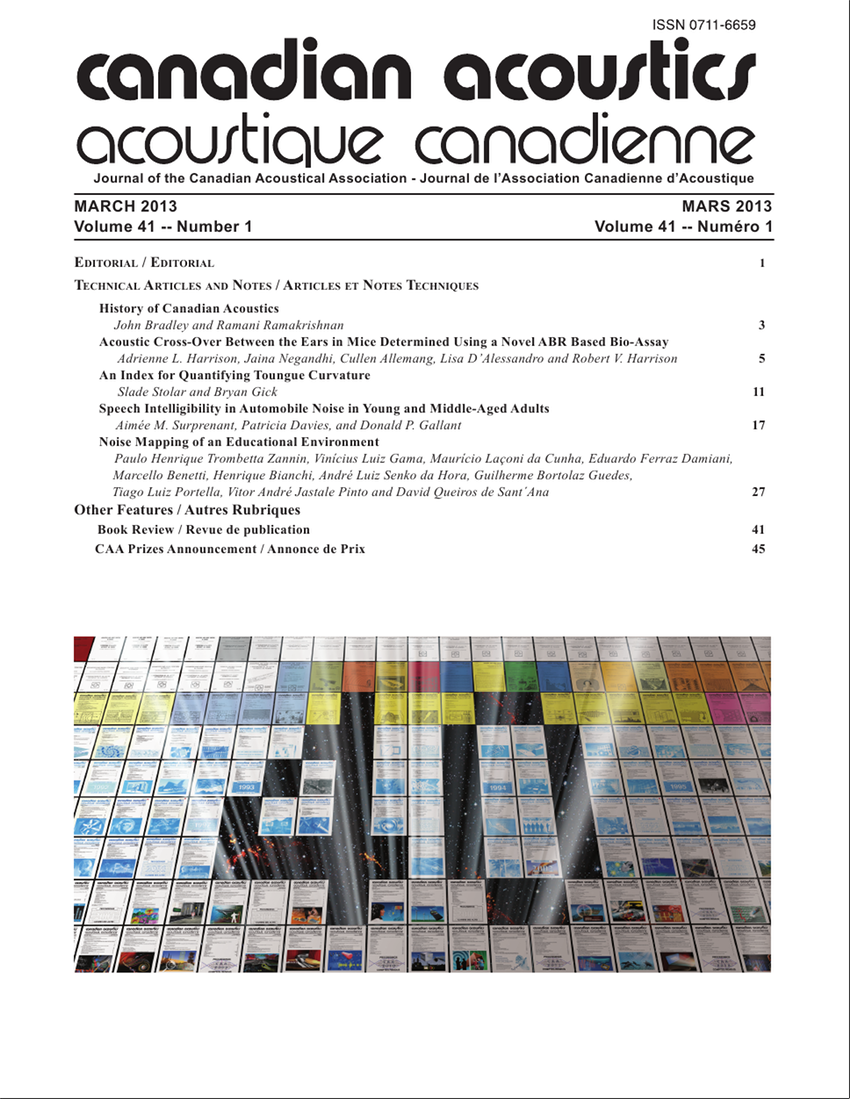Noise Mapping of an Educational Environment
Abstract
The purpose of this study was to perform computer-assisted noise mapping of an educational environment. The computer simulations were performed using SoundPLAN software. An analysis of the acoustic maps generated by the simulations indicates that contributions to the noise levels found on the campus originate mostly from three streets on campus, as well as from the roads surrounding the outer perimeter – the Green Line and the BR-277 highway. The computer-generated acoustic maps show that the noise levels within the campus exceed the limit of Leq = 50 dB(A) established for educational areas, according to the Brazilian standard for noise assessment in communities. Therefore, the noise maps indicate a critical situation of noise pollution on campus. However, despite this negative and concerning situation of noise pollution, the acoustic maps also reveal several “islands of acoustic tranquility” on campus. These “islands” can be observed adjacent to buildings where sound levels range from 45 to 48 dB(A) and from 48 to 51 dB(A), which are indicated in green tones on the acoustic maps.Additional Files
How to Cite
Issue
Section
License
Author Licensing Addendum
This Licensing Addendum ("Addendum") is entered into between the undersigned Author(s) and Canadian Acoustics journal published by the Canadian Acoustical Association (hereinafter referred to as the "Publisher"). The Author(s) and the Publisher agree as follows:
-
Retained Rights: The Author(s) retain(s) the following rights:
- The right to reproduce, distribute, and publicly display the Work on the Author's personal website or the website of the Author's institution.
- The right to use the Work in the Author's teaching activities and presentations.
- The right to include the Work in a compilation for the Author's personal use, not for sale.
-
Grant of License: The Author(s) grant(s) to the Publisher a worldwide exclusive license to publish, reproduce, distribute, and display the Work in Canadian Acoustics and any other formats and media deemed appropriate by the Publisher.
-
Attribution: The Publisher agrees to include proper attribution to the Author(s) in all publications and reproductions of the Work.
-
No Conflict: This Addendum is intended to be in harmony with, and not in conflict with, the terms and conditions of the original agreement entered into between the Author(s) and the Publisher.
-
Copyright Clause: Copyright on articles is held by the Author(s). The corresponding Author has the right to grant on behalf of all Authors and does grant on behalf of all Authors, a worldwide exclusive license to the Publisher and its licensees in perpetuity, in all forms, formats, and media (whether known now or created in the future), including but not limited to the rights to publish, reproduce, distribute, display, store, translate, create adaptations, reprints, include within collections, and create summaries, extracts, and/or abstracts of the Contribution.


